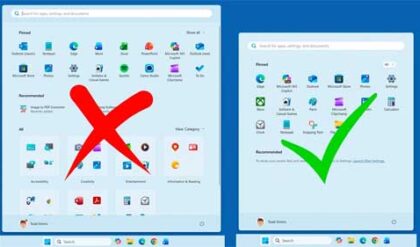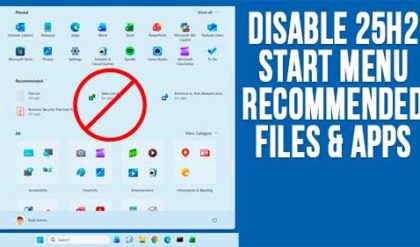**Disclosure: This post contains affiliate links. If you make a purchase through these links, we may earn a small commission at no extra cost to you.
As more and more of our lives are being stored on things such as our computers and smartphones, it makes sense that you would want to make sure that your data is secured in case of some type of theft or hardware failure that would normally leave you without your important personal files.
For this reason, it’s important to make sure that you create regular backups of your important files so you always have a current backup in place that can be quickly restored if needed. When most people think of backups, they usually think of file level backups which only backup your files and the folders that they are contained in. Doing this type of backup is always a good idea and should be done on a regular basis. But there is another type of backup you might want to consider doing called a system image backup. In this article, we will be showing you how to create and restore Windows OS system image backups.
OS system image backups will backup the entire drive on the computer including the operating system (Windows) as well as any programs/applications as well as your personal files and folders. This is different from cloning a hard drive which makes an exact copy of that hard drive on another drive. System image backups usually create their own type of image file or multiple files that contain the contents of your computer.
This backup is created on a different hard drive than the one containing Windows and your apps. Then if your computer has a catastrophic failure like Windows corruption or a virus, you can restore your entire computer back to the date and time that the system image backup was created. But you do need to keep in mind that the backup will only be as current as the date it was made. So, if you restore a system image backup that is 6 months old, your computer will be reverted back to that date and any changes made since then will be lost. This is where doing file level backups come into play because you can then restore your personal files from a current backup once the system image backup has been restored.
There are many backup programs you can use for file level backups as well as system image backups. The one we will be using for our demonstration is called Rescuezilla and can be downloaded from their website here. The software comes in an ISO (International Organization for Standardization) format.
To use the Rescuezilla software, you will need to create a bootable USB flash drive or CD\DVD if you still have a CD burner in your computer. There are plenty of USB media creation tools that you can use for free such as Rufus to create your bootable flash drive.
Creating a Windows OS System Image Backup
In order to create a Windows OS system image, you will need to have another hard drive that can be used to store the image on. This drive will need to be accessible from your computer while running Rescuezilla. You should be able to use an internal or external hard drive for your backup location.
When you first load Rescuezilla, you will have 10 seconds to either change the language from the default or press a key on your keyboard to stop the countdown timer.

If your computer uses UEFI rather than a BIOS, you may get a message that says EFI stub: Warning” failed to measure data for event 1.

This is nothing to worry about and you can just wait a minute or two and the message should go away on its own.
Then you will see the main Rescuezilla screen where you will want to choose the Backup option and click the Next button.

Rescuezilla will then try to locate and mount your hard drives. Then you will need to select the drive that contains your Windows installation and click the Next button. It should be the first drive in the list unless your disks are not in the typical order. It should also say Windows boot Manager next to it.

You will then be shown all the partitions on that drive, and they should all be selected by default. You can leave it like this unless you have some extra partition that is not used by Windows that you do not want backed up.

Next, you will need to select the drive where you want the backup to be stored. Just be sure this hard drive has enough free space to hold a backup of your entire OS drive. The size of the backup will be smaller than the space used on the source drive, but it can still be quite large.

You will then be able to choose a folder on your backup drive where you want the backup to be stored. You can click the Browse button to navigate to the proper location.

There is a button at the upper right corner of the screen that you can use to create a new folder if needed.

If you have any other system image backups in this folder, they will be shown here as well.

On the next screen, you will be able to give your backup a name to make it easier to differentiate between any other backups you might have on the drive.

The next step involves choosing a compression method and level if you do not want to go with the default settings. You have options to use gzip, zstandard, bzip2 or keep the backup uncompressed. More compression makes for longer backup times but smaller backup file sizes.

You will then be shown a summary screen for the backup job and if everything looks good, you can click on the Next button to start the system image backup.

How long this backup will take will depend on how much data is on your hard drive and its speed.

Once the backup process is complete, you can then click the Next button to be taken back to the main screen.

You can then click on the monitor icon at the lower left corner of the screen to get to the shutdown and reboot options. Then you can boot back into Windows and check out your backup if desired.

Restoring a Windows OS System Image Backup
If there comes a time when you need to restore your computer using one of your system image backups, you will find that the restoration process is very similar to the process you performed to make the backup.
Once again, you will need to boot to your Rescuezilla media but this time you will choose the Restore option.

Next, you will need to select the drive that has your system image backup on it and click the Next button.

Now you will be able to browse to the location where the backup is located and select it once you find it.

You will then be shown all the backups that are contained in that folder. So, if you are using one folder for all your backups, you will need to make sure to choose the correct one.

The next step involves selecting the drive to restore the backup image to. This should be your Windows drive since you are overwriting your current Windows installation with the one from the system image backup.

You will then be asked to choose which partitions you want to restore. You will most likely select all of them and they should all be selected by default.

You will then be shown a summary screen of what is about to be restored and if everything looks correct, you can click the Next button.

You will then be shown a warning telling you that all the data will be overwritten on the drive that you will be restoring to. If you have any data on this drive that you need to backup, you should do this before starting the restore process.

You will then see the restore progress screen and will need to wait until the process is complete before rebooting your computer to make sure the system image restore process was successful.

For additional training resources, check out our online IT training courses.
Check out our extensive IT book series.






